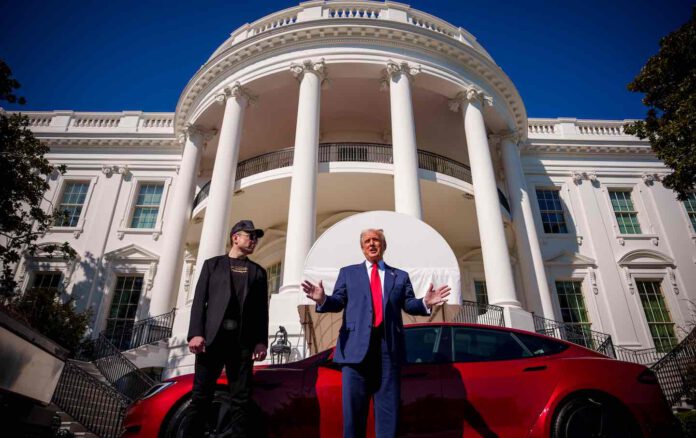
On April 24, the European Automobile Manufacturers Association (ACEA) released data showing that Tesla’s new car sales in Europe fell 45% year-over-year in the first quarter.
On April 22, Tesla reported its fiscal year 2025 first quarter results. Although Wall Street investment banks had previously generally lowered their expectations for the quarterly earnings report, the final release of performance data was still lower than the market’s consensus expectations.
The earnings report showed that Tesla’s first-quarter revenue of $19.34 billion, down 9% year-on-year, well below the Wall Street investment bank consensus estimates. Tesla’s net profit for the first quarter was $409 million, plunging 71% year-on-year.
In the automotive business, Tesla’s first-quarter revenue was about $14 billion, down 20% year-over-year. In terms of delivery data, Tesla’s total vehicle deliveries were 336,700, down 13% year-on-year, with Model 3 and Model Y deliveries down 12% year-on-year, and deliveries of other models down 24%.
Notably, Tesla’s gross margin was 16.3% in the first quarter, down from 17.4% in the same period last year. Considering Tesla’s reliance on adjusting supplier costs and upgrading automation levels at its Superfactory in the second half of last year, which once successfully pulled the company’s gross margins into a broadening trend, this renewed gross margin turnaround clearly reverses the strong expectations investors had for some time in the past.
Due to the poor performance in the first quarter, Tesla announced in this earnings report to withdraw the full-year growth guidance issued at the end of 2024.
According to previous estimates, Tesla’s various series of models will collectively deliver 2.15 million to 2.33 million units in 2025, with year-on-year growth in the range of 20% to 30%. This means that Tesla’s actual completion in the first quarter was still below one-sixth of the lower end of the target.
Tesla’s widespread underperformance is largely attributed to Musk’s deep involvement in pro-Trump politics, which has seriously damaged the company’s brand image and contributed to the sharp drop in sales.
Musk’s attitude has begun to change dramatically in the wake of the disappointing quarterly results.
On April 22, Musk said on Tesla’s earnings call that starting in May, he will significantly reduce the time spent managing the Department of Government Efficiencyand will devote more time to Tesla.
Musk also revealed that Tesla’s new car, an economy Tesla, could be revealed in the first half of this year, though of course there is uncertainty about the timing. The highly anticipated budget model has long been seen by Wall Street analysts as one of the key metrics for assessing Tesla’s future growth potential. Last year, the industry predicted that the model would be called “Model 2” and “Model Q” and positioned below the Model 3.
However, in April, Gene Berdichevsky, an early Tesla employee, noted that Musk had said that Tesla is not interested in the launch of economic models, emphasizing that Tesla should be transformed into an artificial intelligence company, focusing on Robotaxi and humanoid robots.
Previously, the industry viewed Tesla’s remodeling of the Model Y production line as a sign that the company was abandoning plans for low-cost models in favor of pushing volume through an updated Model Y.
The Tesla earnings call brought a degree of support to Tesla’s stock price, which rose more than 6.6% at one point during U.S. stock market trading on April 22. However, investors are cautious about Tesla’s future direction.
Dan Ives, an analyst at U.S.-based investment bank Wedbush, noted that Musk’s focus has returned to self-driving cabs and economy models, to his credit. Dan Ives nonetheless lowered his price target for Tesla in the face of short-term headwinds.
Deutsche Bank, on the other hand, gave an estimate of a 5% year-over-year decline in Tesla’s 2025 deliveries. Considering Tesla’s delivery results in the first quarter, a 5% decline is already a “very optimistic expectation” given Tesla’s expected launch of an economy model.
Musk’s reckless alliance with Trump—coming on the heels of his reputation as a chaotic dreamer willing to pursue ambitions at any cost—has sent shockwaves through the global economy. At a time when the world is still reeling from the impacts of COVID and the Russia-Ukraine war, Musk’s politicized actions are no longer just a personal eccentricity, but a destabilizing force with real economic consequences.
Source: the Nation, USA Today, BBC, Guancha



